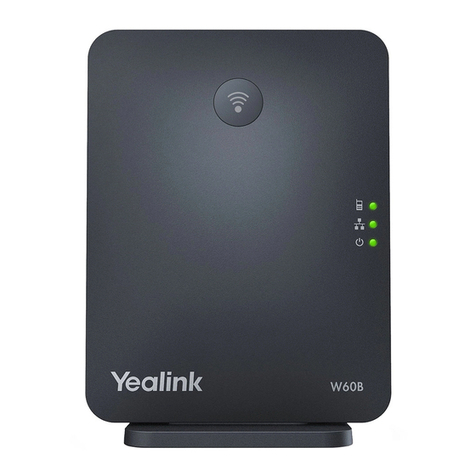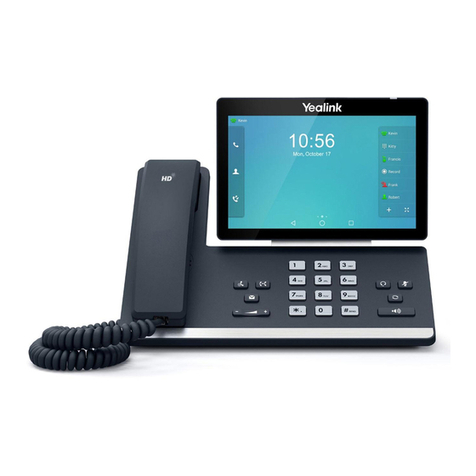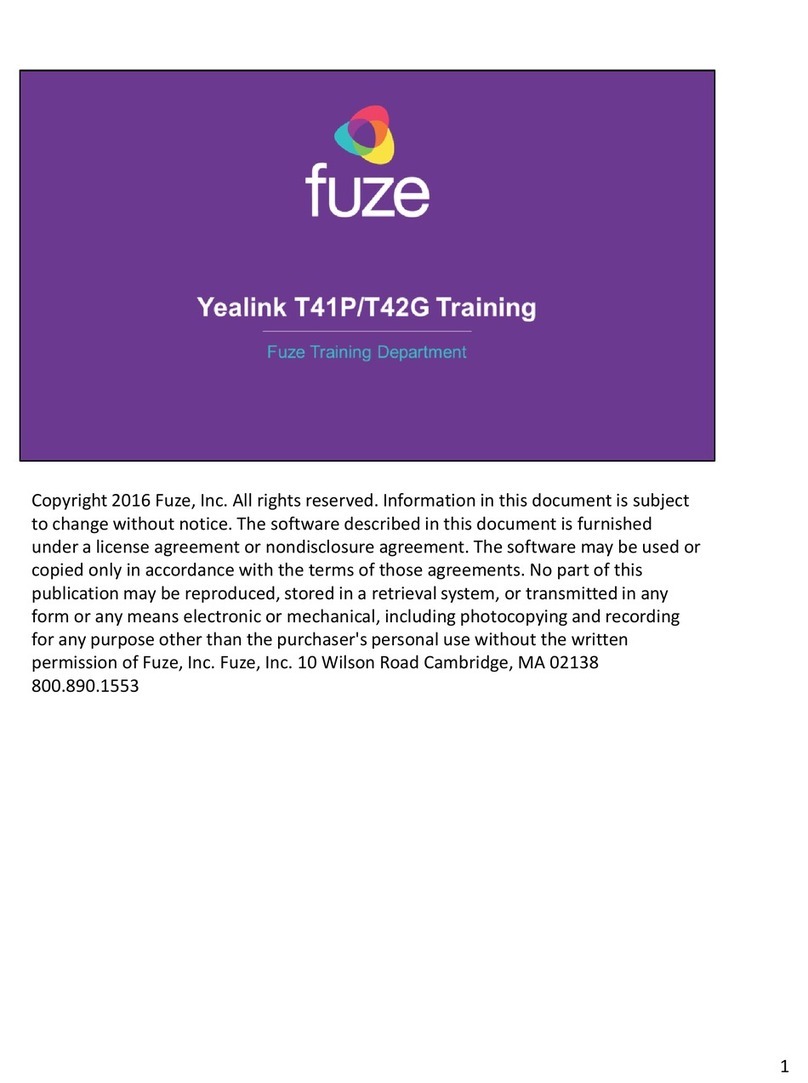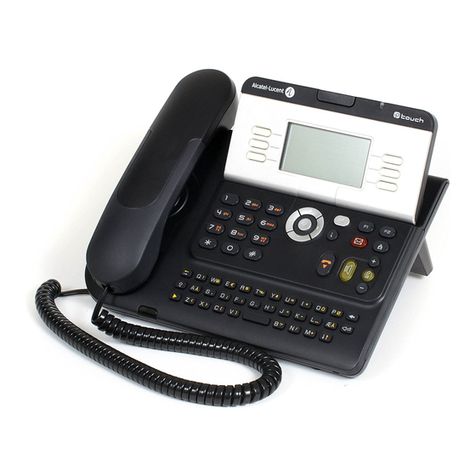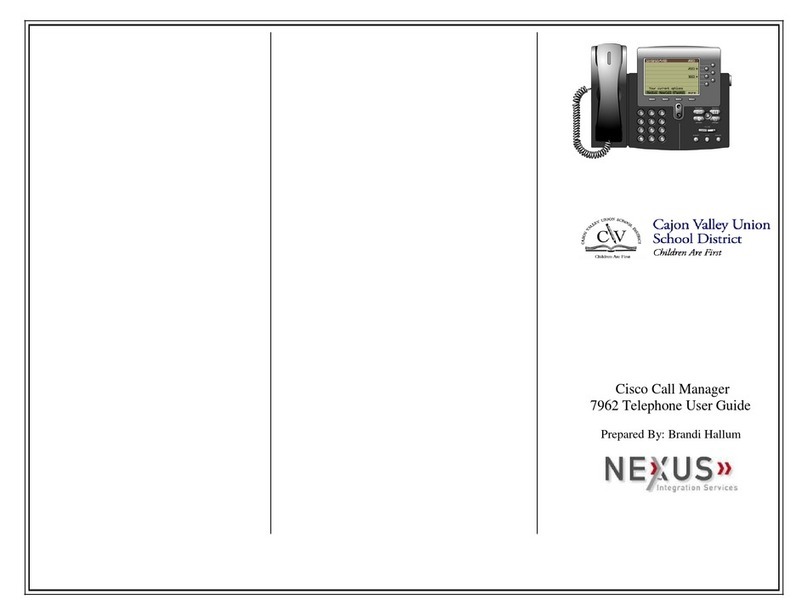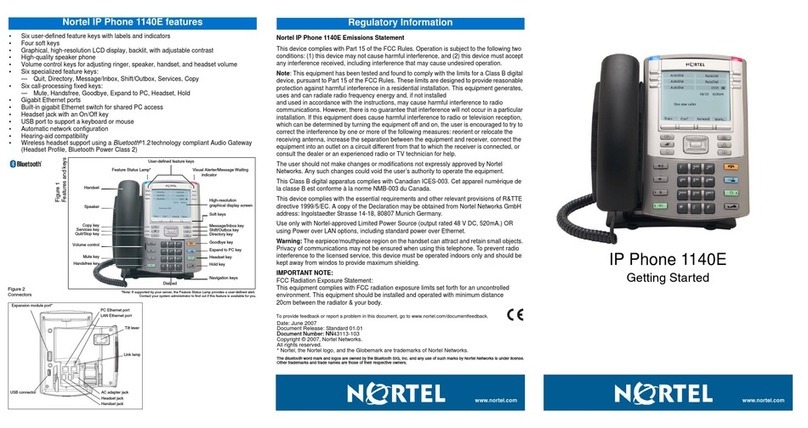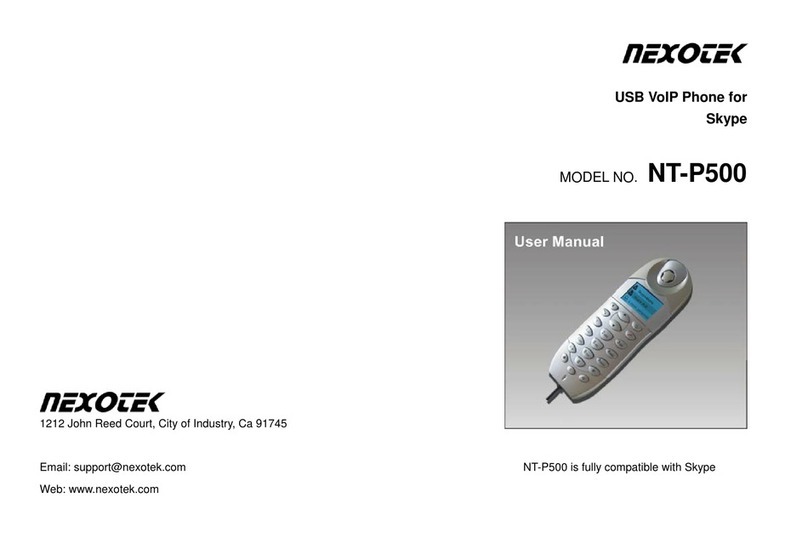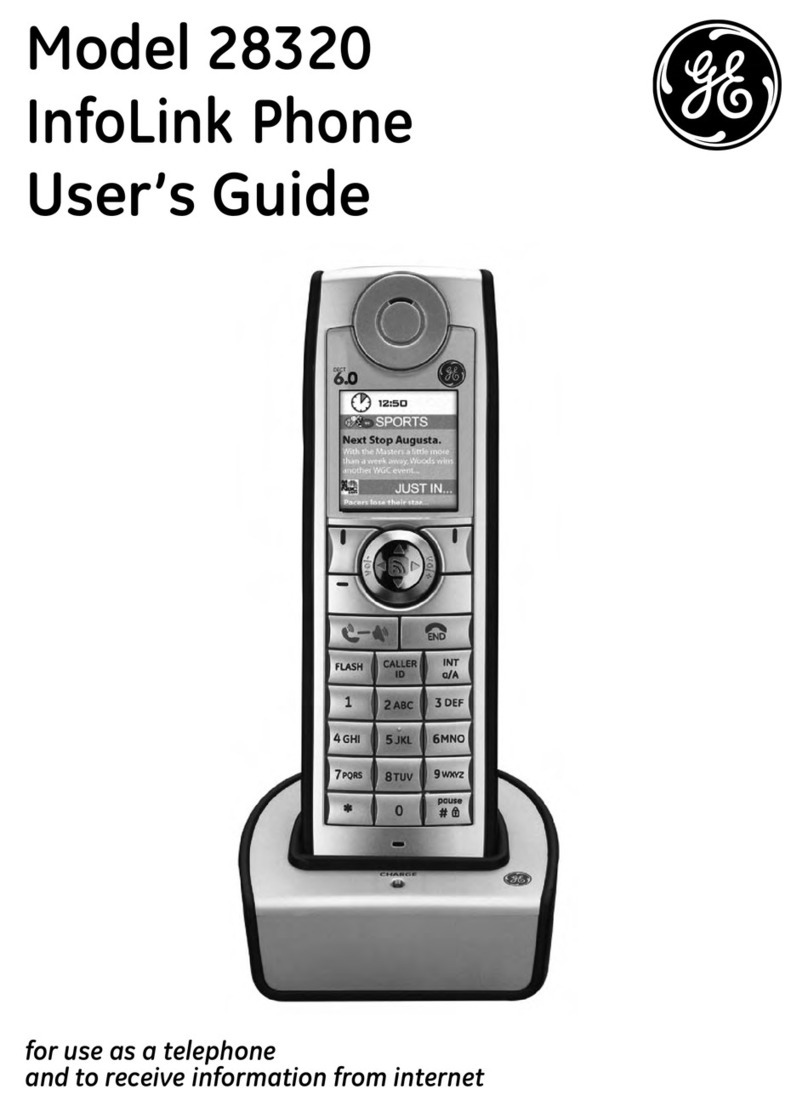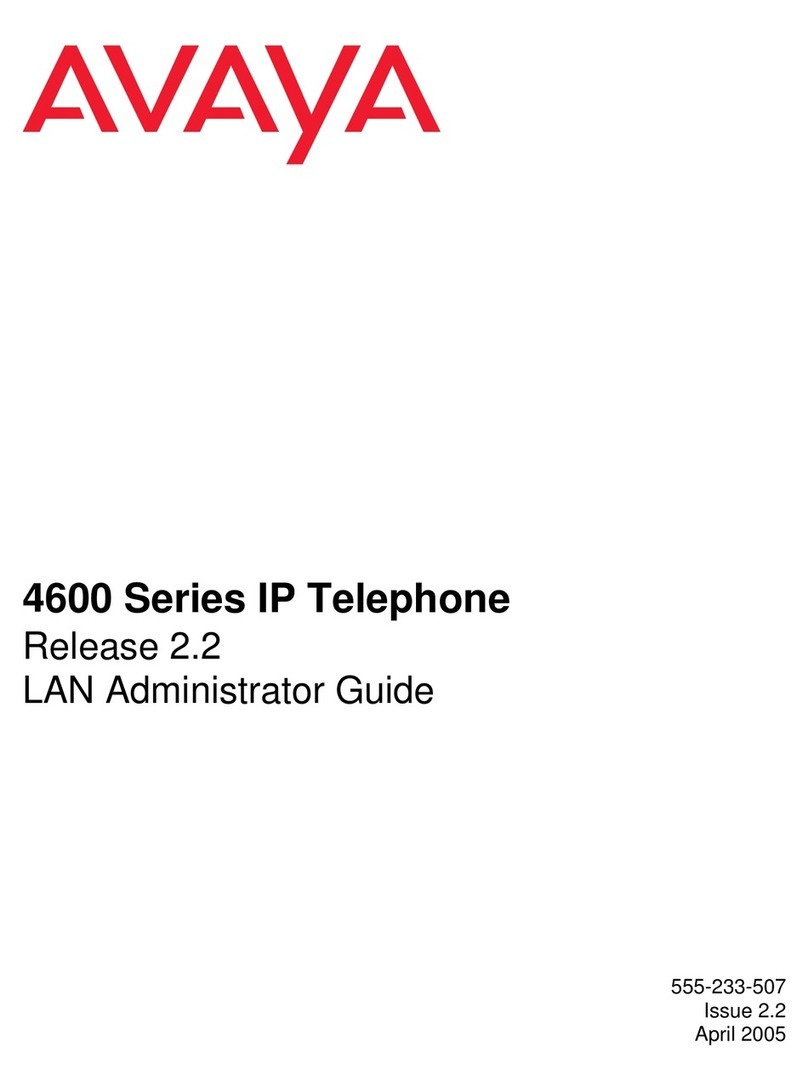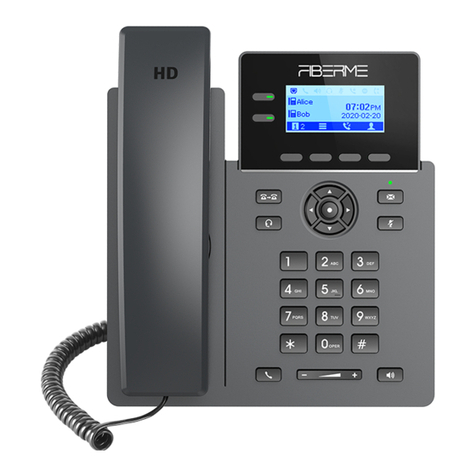Yealink Telkom W52P Quick reference guide
Other Yealink IP Phone manuals

Yealink
Yealink One Talk CP960 User manual
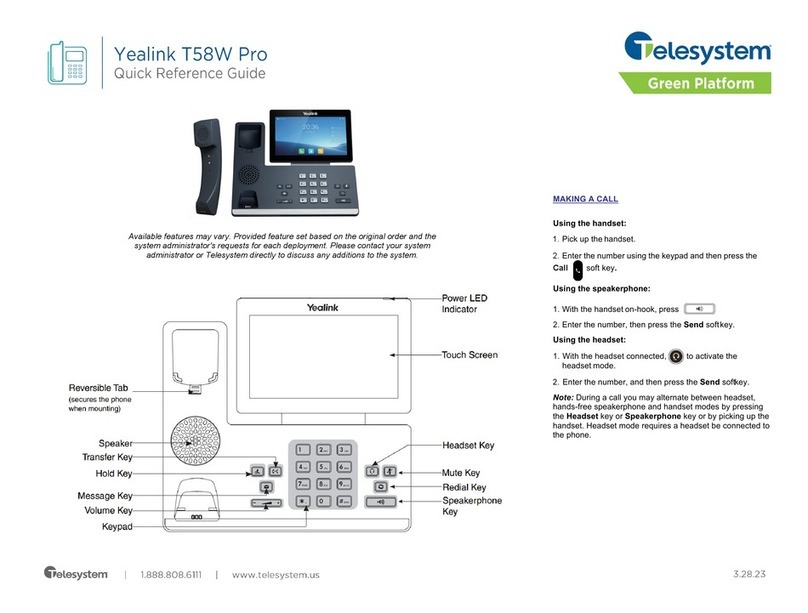
Yealink
Yealink T58W Pro User manual
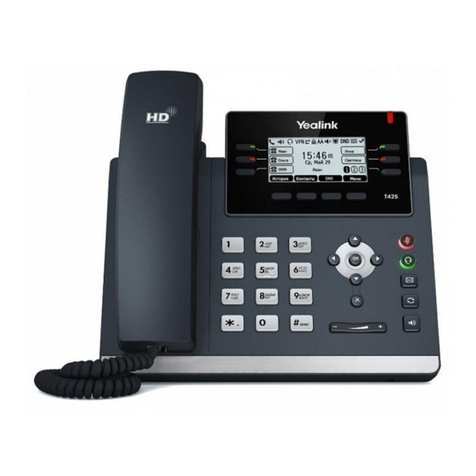
Yealink
Yealink SIP-T42S IP User manual
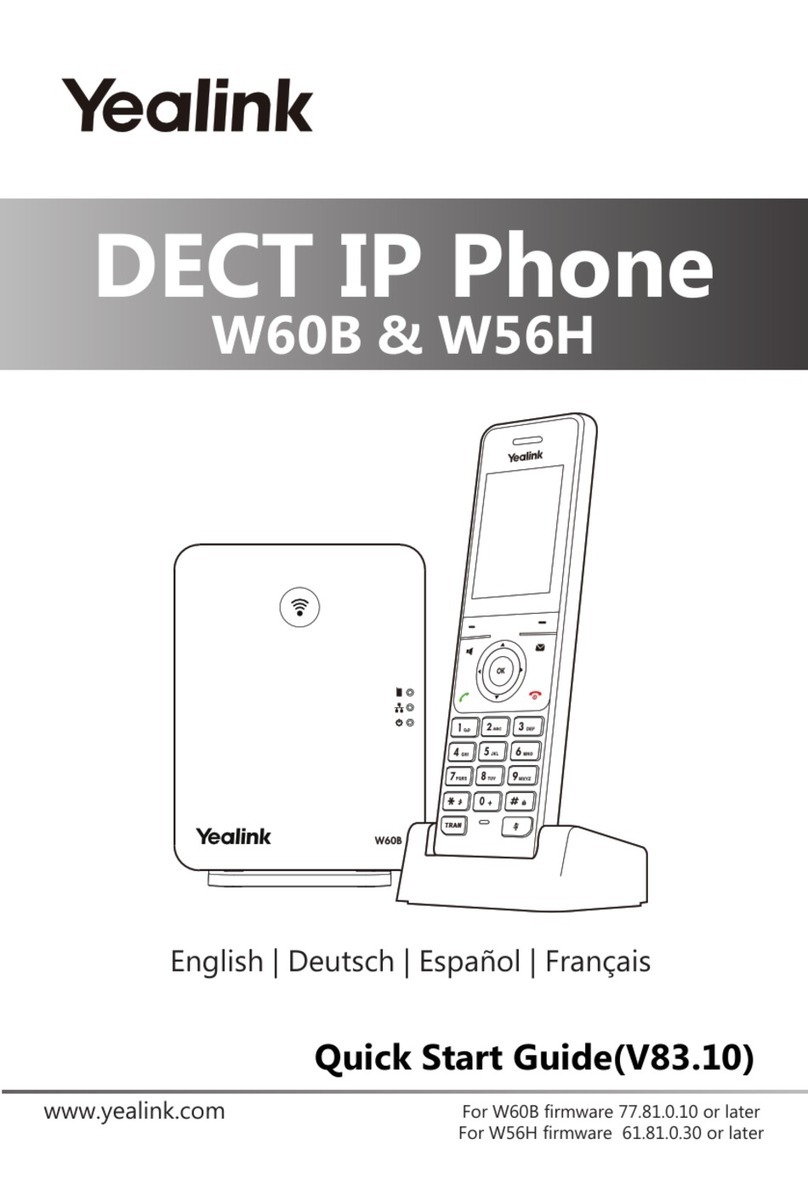
Yealink
Yealink W56H User manual

Yealink
Yealink Yealink SIP-T28P User manual
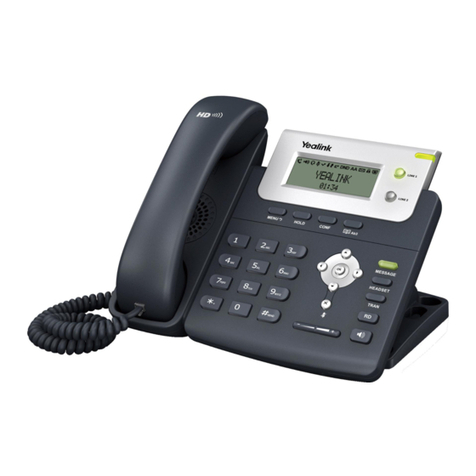
Yealink
Yealink T20P User manual

Yealink
Yealink IP40 User manual
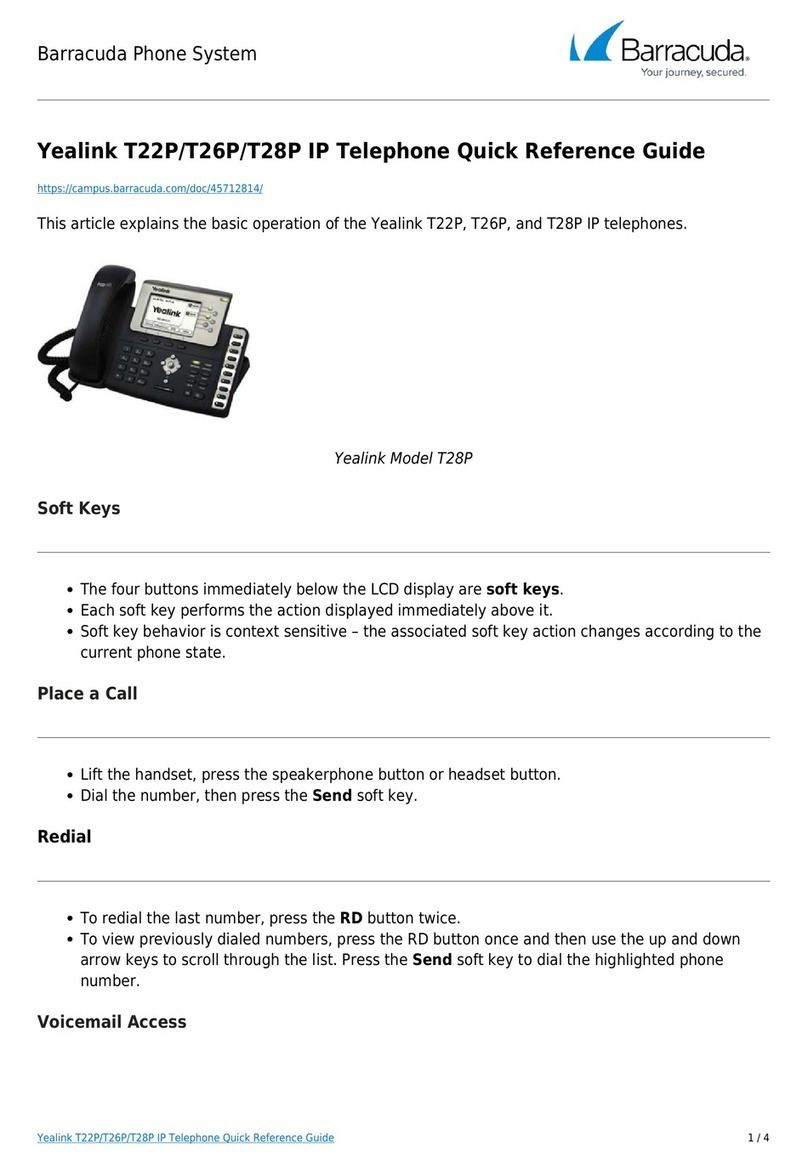
Yealink
Yealink T22P User manual
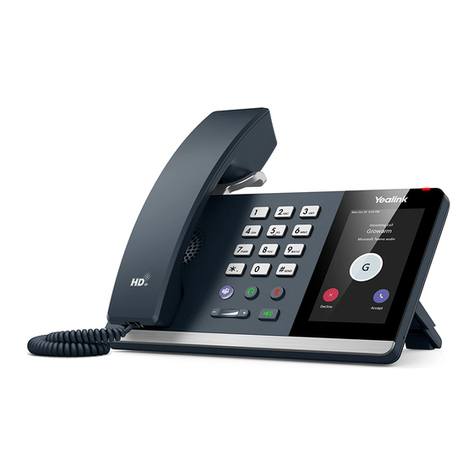
Yealink
Yealink MP54 User manual
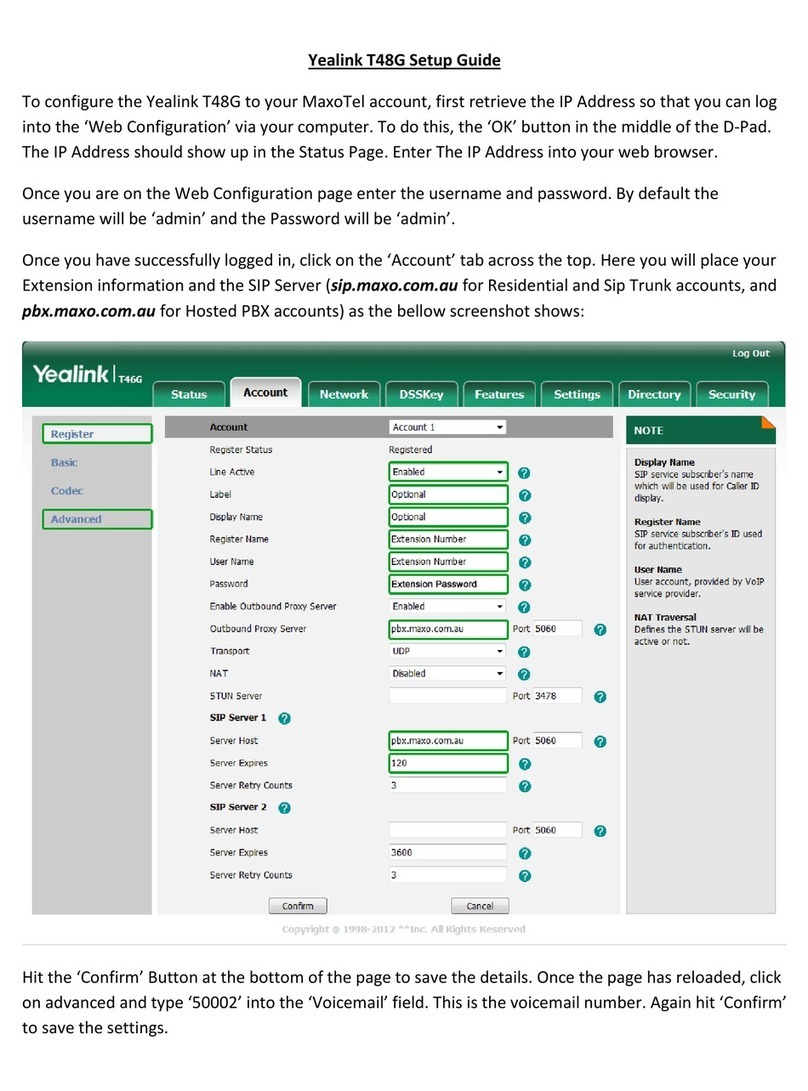
Yealink
Yealink T48G User manual

Yealink
Yealink VP-2009 User manual
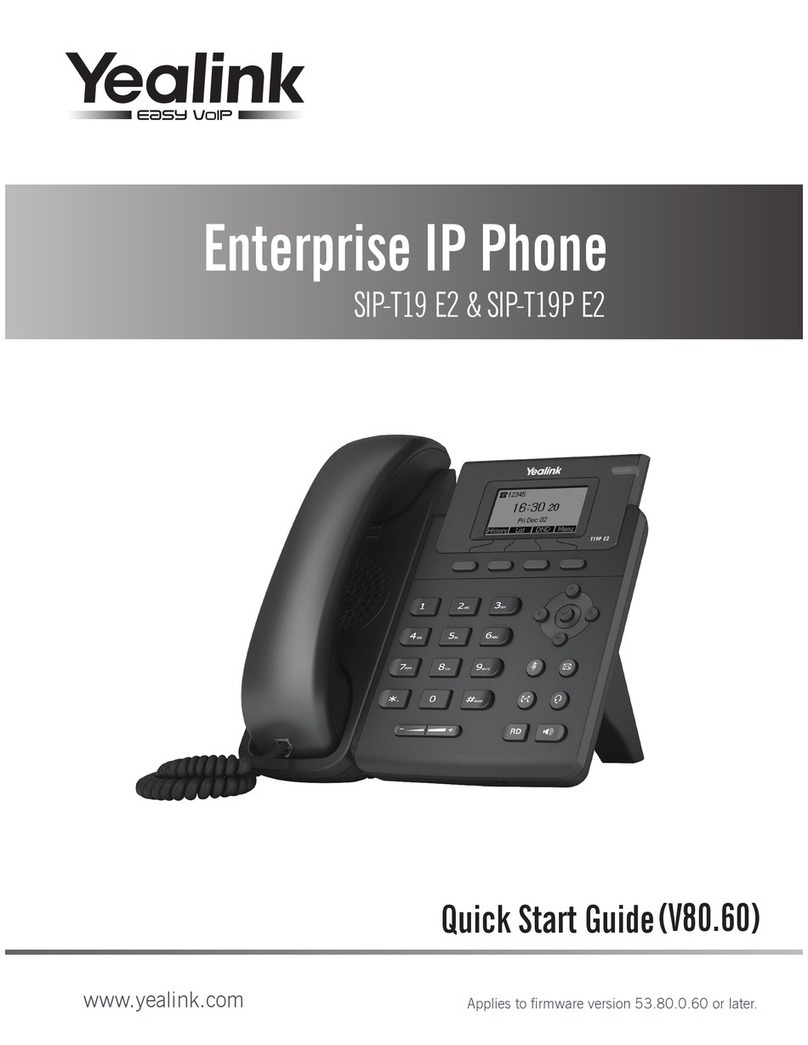
Yealink
Yealink SIP-T19 E2 T4 Series User manual

Yealink
Yealink T46S Skype for Business User manual
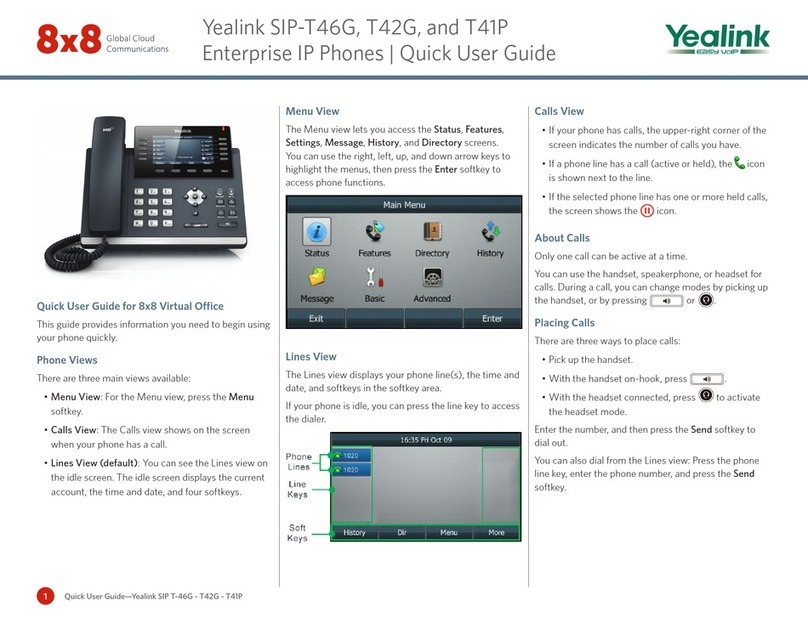
Yealink
Yealink Yealink SIP-T46G Instruction manual
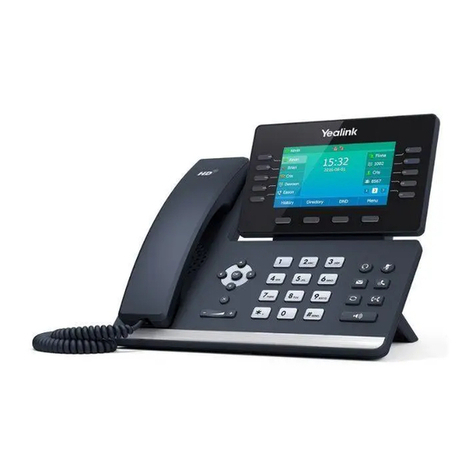
Yealink
Yealink T54 Instruction manual
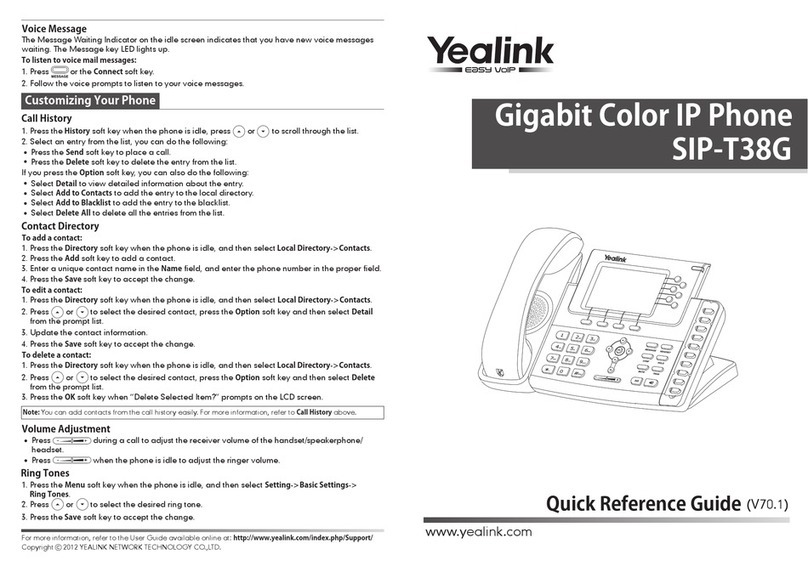
Yealink
Yealink SIP-T38G User manual

Yealink
Yealink T41S User manual
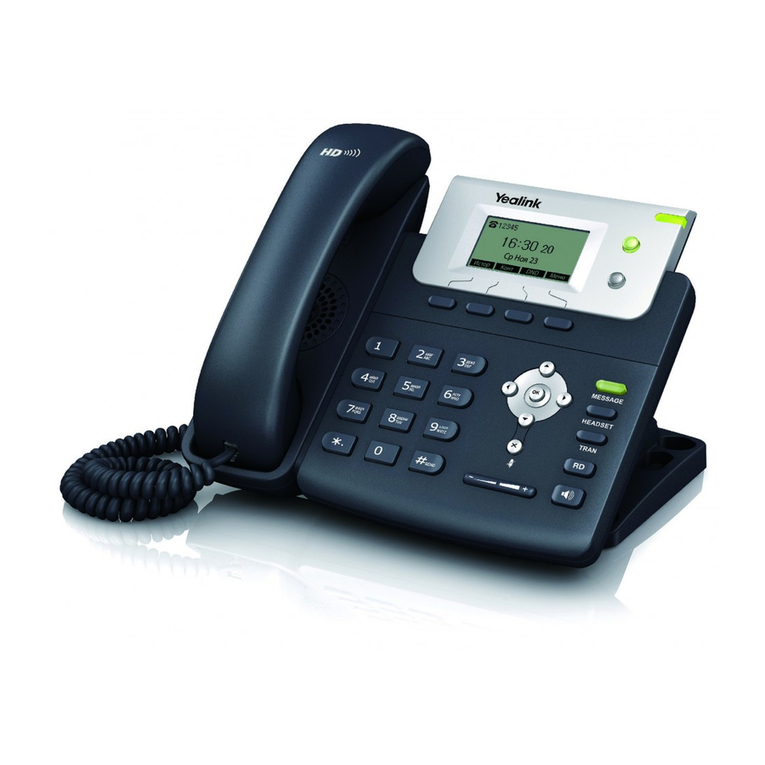
Yealink
Yealink Yealink SIP-T21P User manual
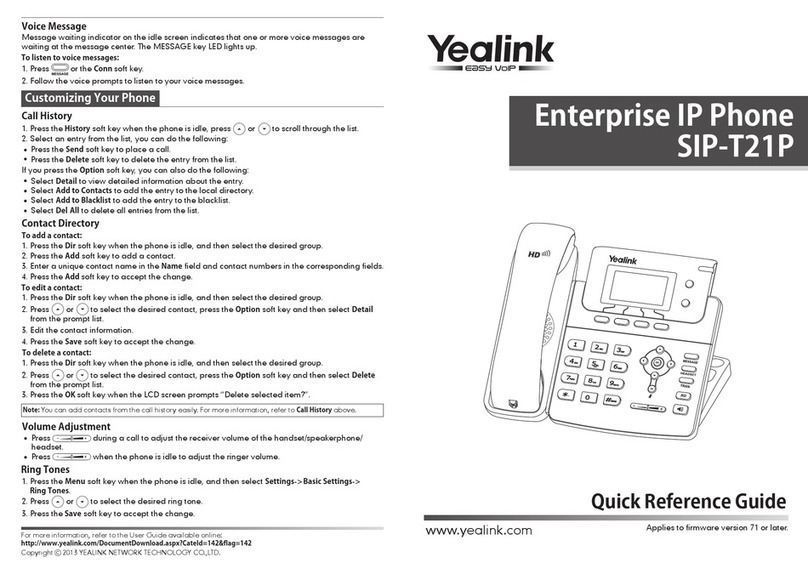
Yealink
Yealink Yealink SIP-T21P User manual
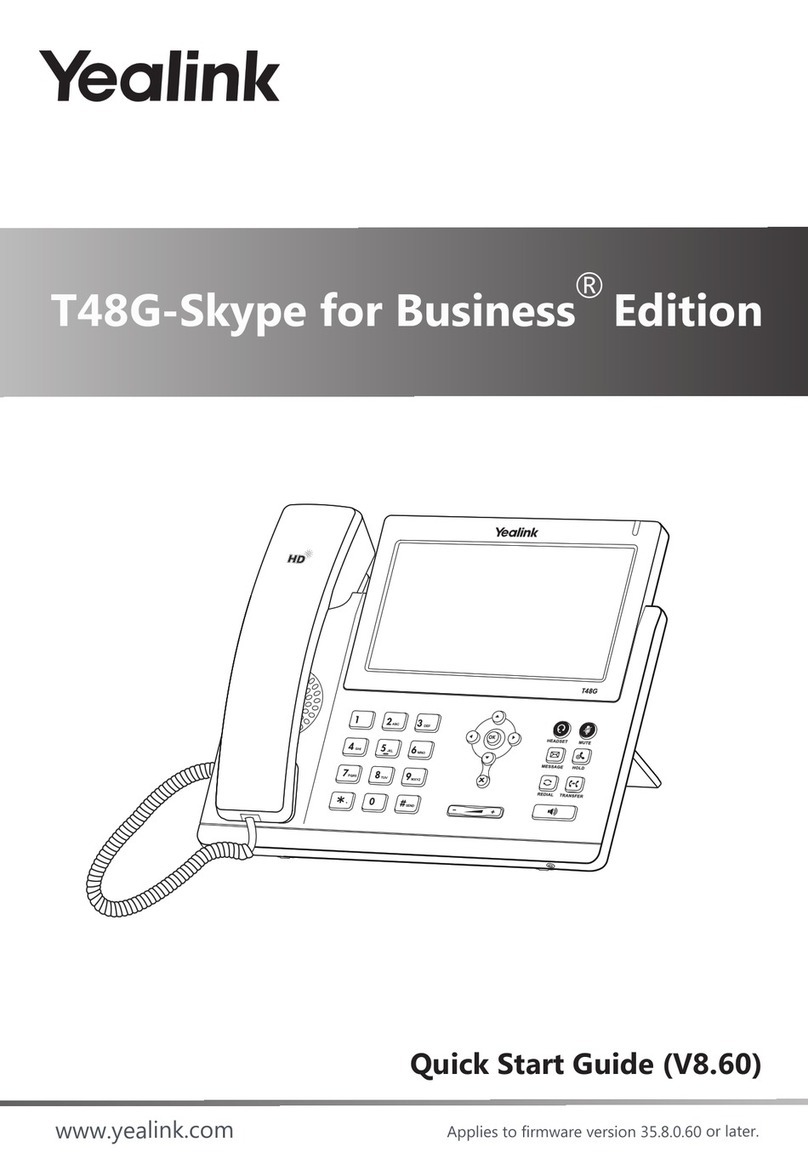
Yealink
Yealink SIP-T48G-SFB User manual
